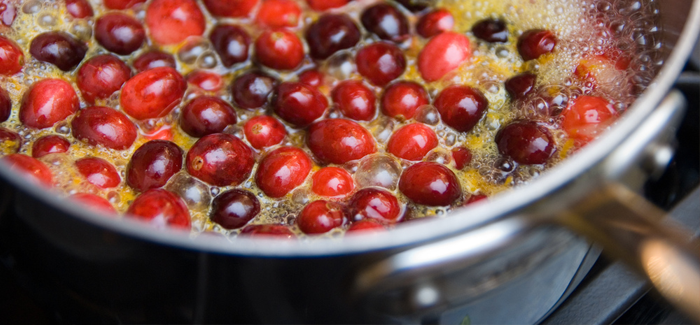
Cooking cranberry sauce. (Photography by Paul Goyette, CC BY-NC-SA 2.0)
How Leiden got its cranberries.
This Thanksgiving, historian Jeremy Bangs, X’67, will celebrate the way he always does: with a Thanksgiving Day ceremony at the Pieterskerk in Leiden, a soaring Gothic church at the heart of the Pilgrims' neighborhood during their pre-Mayflower exile in the Netherlands.
The founder of the Leiden American Pilgrim Museum, Bangs is an American who has spent the better part of 40 years in this Pilgrim-haunted Dutch town, tracing their lives here and in the New World. He argues that the first Thanksgiving in Plymouth Colony was partly inspired by Leiden’s annual autumn feast commemorating the end of the Spanish siege of 1574, when nearly half the town starved to death.
Centuries later, the American holiday tradition returned the favor (sort of), accidentally introducing to Leiden a modern Thanksgiving staple: cranberries. And it was all his mother’s doing, Bangs says.
In the mid-1970s, when Bangs’s father was a visiting Fulbright professor at Leiden University, he delivered the lecture at the Pieterskerk ceremony one year. And Bangs’s mother organized the Thanksgiving meal for visiting Fulbright students. Among the items on her shopping list were cranberries for cranberry sauce. “She couldn’t find any,” Bangs says. “She went everywhere.” The next year, every shop had them. The owners, he says, thought that a horde of customers had been looking for them. “They have a meeting of people who run grocery stores, and they all said, ‘A lot of Americans came asking for cranberry sauce.’” Bangs laughs. "No, just one American, asking at every shop.”
So, do Leiden’s stores still sell them? “Yep,” Bangs says. And he still buys them. “Ocean Spray really got a toehold here.”
